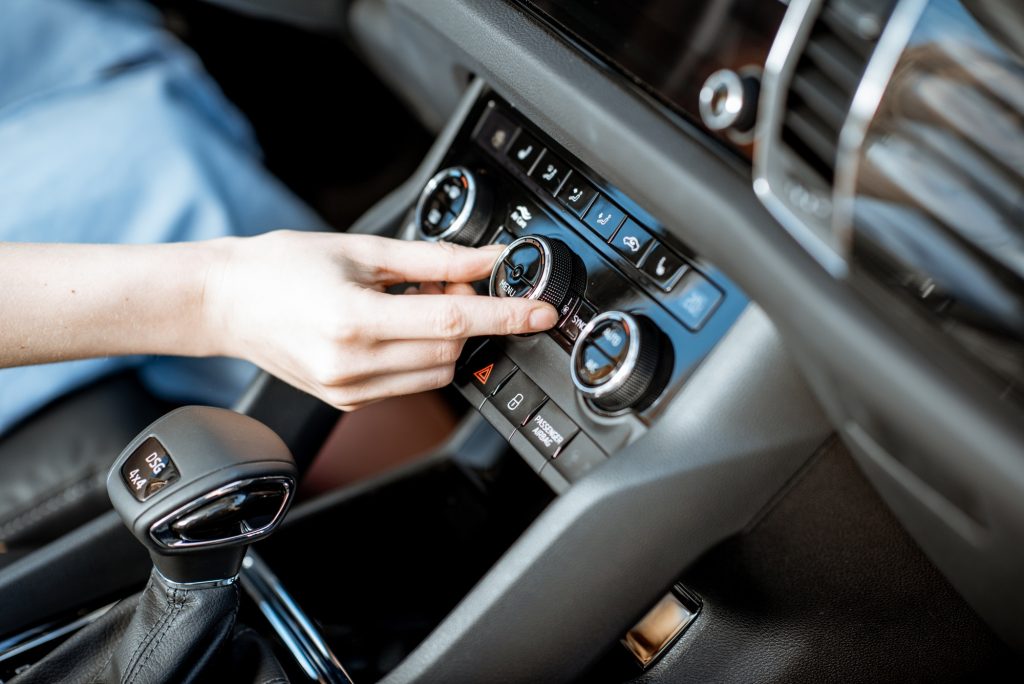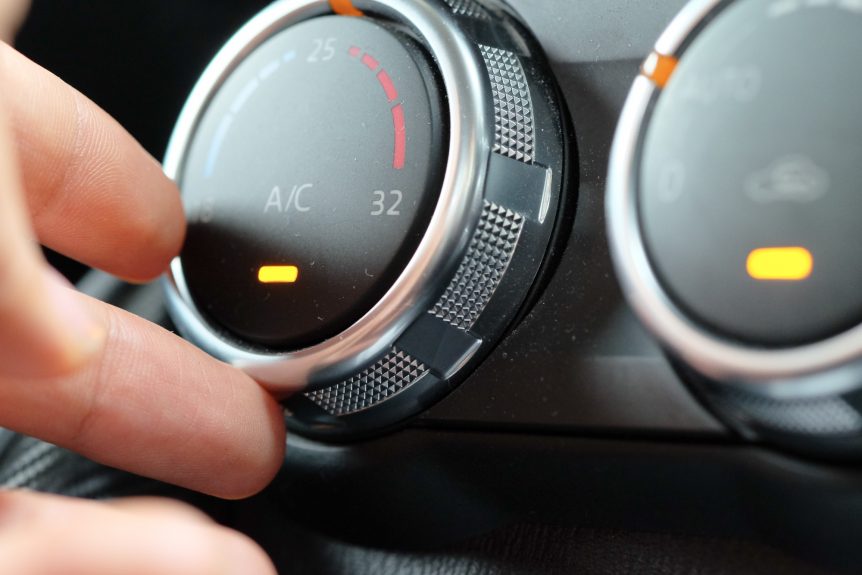If you have ever wondered how your car air conditioning works, then here we run through the basics of a typical aircon system.
Air conditioning does several things to condition the air passing through a space, in this case the driver and passenger area of your car. Although you may have though the air is only being cooled, the moisture content in the air is also being reduced, normally referred to as humidity. Warm air holds more moisture than cold air
Air conditioning’s uses the main principles of evaporation and condensation, followed by compression and expansion.
Evaporation (when liquids turn into vapours)
When you have been for a swim and the water dries on your skin you will most probably feel colder. This is caused by the process of evaporation. As the water dries and evaporates, it takes away heat from the surface of your skin.
Condensation (when gases turn into liquids)
If you wear glasses you will have seen condensation in action many times. Walk into a warm room from outside and your glasses steam up. The warmer, moister air of the room cools on contact with the cold surface of your glasses and the cold air can hold less moisture, it condenses into water on your glasses.
Compression (when gases get squeezed)
Squeeze a gas enough and it will turn into a liquid. This is how sprays such as hair spray work. Compress a gas with a pump or a compressor and you will notice the vessel gets warmer as the gas molecules actually rub together more as they get closer together and so this friction causes heat to be created.
Expansion (when a liquid or gas spreads out)
Spray a can of deodorant and you will see a liquid expanding into a gas, you will also notice how cold it is as it leaves the nozzle.
There are five main components to an air-conditioning system. These are the Compressor, Condenser, Receiver-dryer, Expansion valve, and the Evaporator.

The Air Conditioning Cycle
The key fluid that passes around the whole aircon system is called the refrigerant. The refrigerant is a special material that can evaporate at a low temperature and then condense again at a higher pressure. Originally R-12 was the refrigerant used in almost all cars but this was found to be a contributor to the hole in the earth’s ozone layer as it was a chlorofluorocarbon (CFC). You may be aware that these refrigerants were banned some years ago. After 1996 a non-CFC fluid called R-134A which is kinder to the environment was introduced and we now have R-1234YF, as R134A is a contributor to global warming but both are currently in use.
This is an overview of how car air-conditioning works
- Compressor The compressor is the “engine” of your air conditioning system. When the aircon system is turned on, the compressor pumps refrigerant vapour under high pressure to the condenser.
- Condenser The condenser turns the high-pressure refrigerant vapor into a liquid. It is mounted in front of the engine’s radiator. The vapour is condensed to a liquid because of the high pressure that is driving it in to the condenser, and this generates a lot of heat. The heat is removed from the condenser by air flowing around the outside of condenser.
- Receiver The refrigerant is now a liquid and moves to the receiver-dryer. This is a small reservoir for the liquid refrigerant and removes any moisture that may have leaked into the refrigerant. Moisture in the system can cause failures as ice crystals form causing blockages and mechanical damage.
- Expansion Valve The pressurised refrigerant flows from the receiver-drier to the expansion valve. The valve de-pressurises the liquid refrigerant so that it can expand and become refrigerant vapour again in the evaporator.
- Evaporator The evaporator has tubes and fins and is usually mounted inside the passenger compartment behind the fascia above the footwell. As the cold low-pressure refrigerant is passed into the evaporator, it both vaporises and absorbs heat from the air. The fan inside the passenger compartment pushes air over the outside of the evaporator, so cold air is circulated inside the car. On the ‘air-side’ of the evaporator, the moisture in the air is reduced, and the ‘condensate’ is collected and drained away.
- Back to the Compressor The compressor then draws in the low-pressure refrigerant vapour to start another refrigeration cycle. The refrigeration cycle then runs continuously, and is regulated by the setting of the expansion valve.
All car air conditioning systems work on the same principles but the exact components may vary slightly between different car manufacturers.
Many people don’t realise that running their air conditioning increases fuel consumption. The extra load caused by running the aircon uses extra petrol because the engine has to run harder to produce the energy needed to run the system
So now you know all about the main components you can see that keeping things running smoothly will ensure the best efficiency of your system. We are car aircon specialists and can help you with servicing your system. Please give us a call or send us an email.

Comments 1
Hi I’ve got Honda civic 06 i would like to have the aircon regased has I’ve had the car 3years and never used the aircon. I tried the a/c switch today and noticed the compressor wasn’t spinning. How much is it going to cost to repair.